Changing the Wheels on My Porsche 911 (992)! Impressions After Upgrading from 19/20-inch to 20/21-inch
公開日:
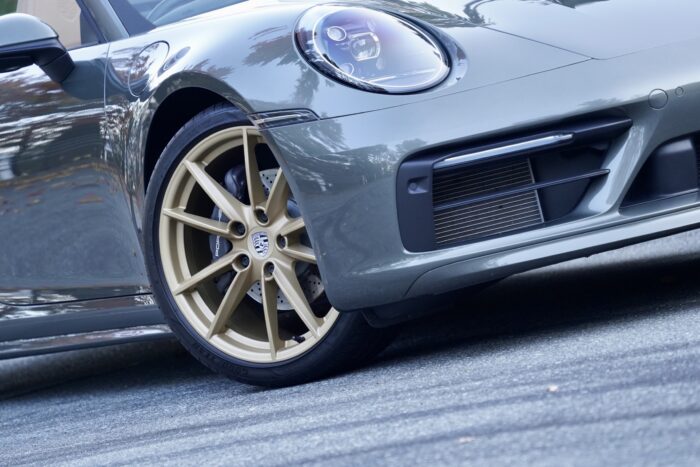
コンテンツ
Giving My Porsche 911 (992) a Fresh New Look
It’s been just over two years since I bought my current Porsche 911 (992 model) Carrera Cabriolet.
While mainly using it for everyday driving, I’ve also taken it to driving schools, run it on the circuit, and gone on grand tours. The mileage has now surpassed 13,000 km. Since I only drive about 6,000 km per year, I still feel like I haven’t truly mastered the 992 yet.
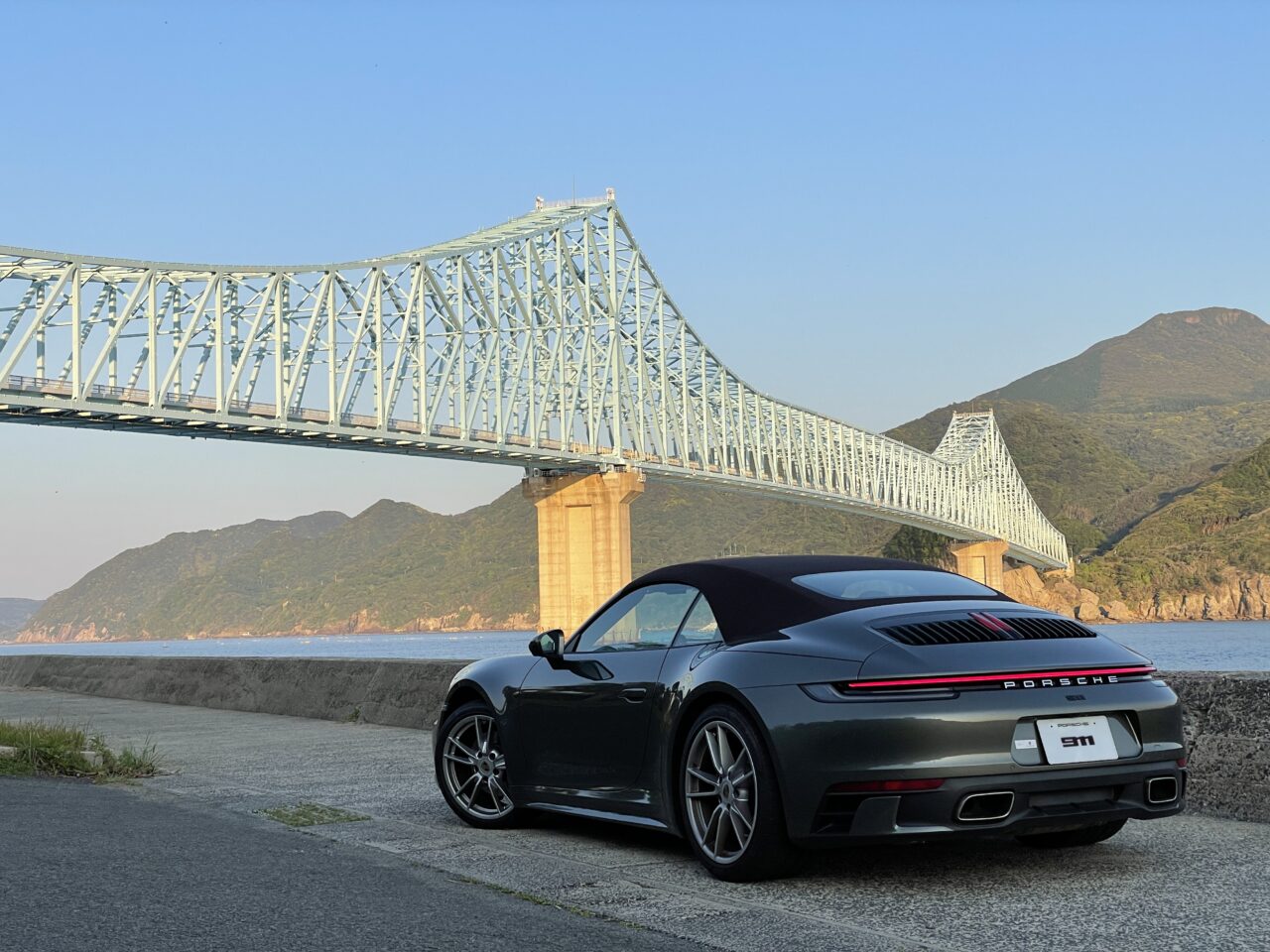
That said, I’ve started feeling the urge to give the 992 a bit of an image makeover.
When I originally ordered this car, I deliberately chose the factory 19/20-inch Carrera wheels. The reasons were:
① Expectation of better ride comfort due to the lighter weight of smaller wheels
② Wheels can always be changed later anyway
③ Balance with the smaller brake discs compared to the S model
Regarding ①, after driving various 992s, I realized there isn’t a big difference in ride comfort between 19/20-inch and 20/21-inch wheels. As for ③, since the base Carrera doesn’t have red calipers, I felt the 20/21-inch wheels wouldn’t look too sparse either.
So, I decided to go ahead with ② and try changing the look.
Why I Chose Satin Aurum Wheels
When considering wheel replacement, my first candidate was my favorite Carrera Classic wheels. Cars wearing those wheels somehow feel more comfortable to ride in, and the design is very elegant.
However, since I was going to change them anyway, I chose the factory Satin Aurum painted Carrera S wheels, which better complement the Aventurine Green body color than the silver-based Carrera Classic wheels I currently have.
Originally, I had considered the Satin Aurum wheels several times when ordering, and I also remembered my wife, when configuring her ideal Carrera in Guards Red, had chosen Satin Aurum wheels and really liked the gold color.
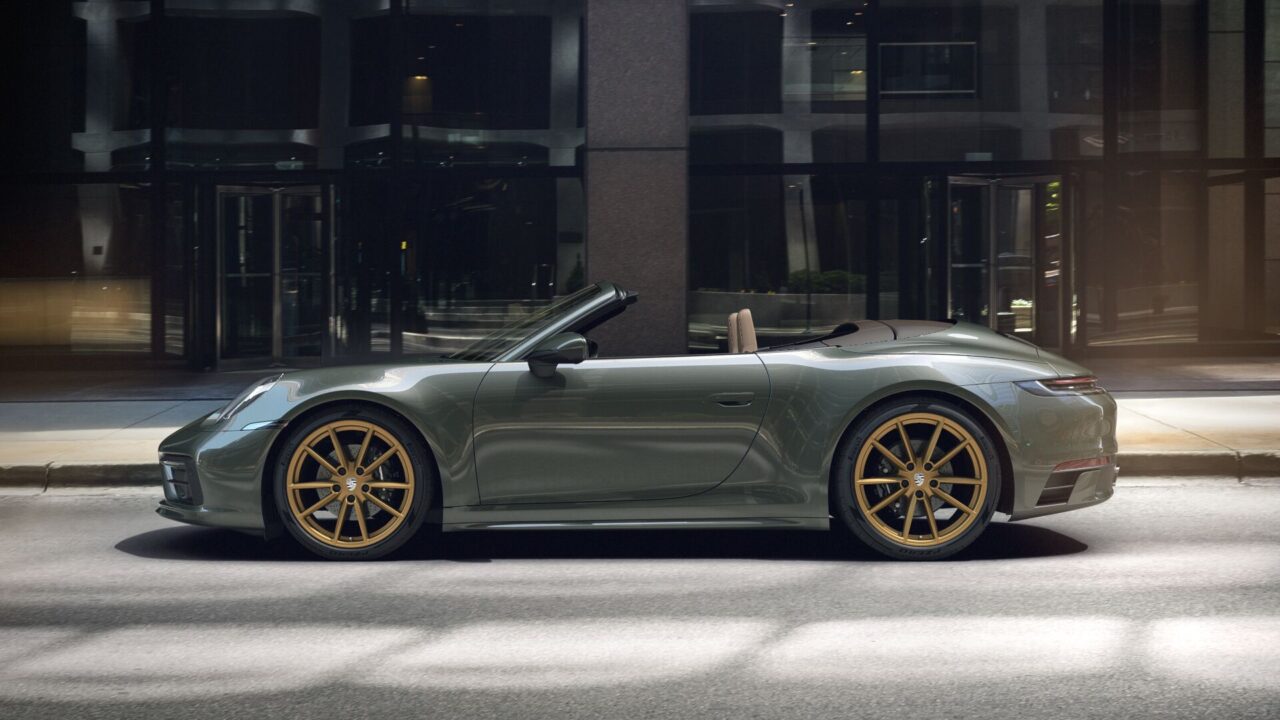

Also, I had previously test-driven a 718 Cayman GTS 4.0 that wore Satin Aurum wheels with the same Aventurine Green body, and it looked really sharp in person.
By chance, I was able to acquire a used set of factory Satin Aurum painted Carrera S wheels. They were in good condition and already fitted with the factory tire pressure sensors (TPMS), so I decided to buy them immediately.
First Impressions After Installation
Visual Impact
A few days later, the new wheels arrived, and I promptly had them fitted at Nishinomiya Base.
The impression after fitting was a big change from before. The car now has a very mature vibe but with just the right amount of flashiness. I also feel like I get more looks while waiting at traffic lights.
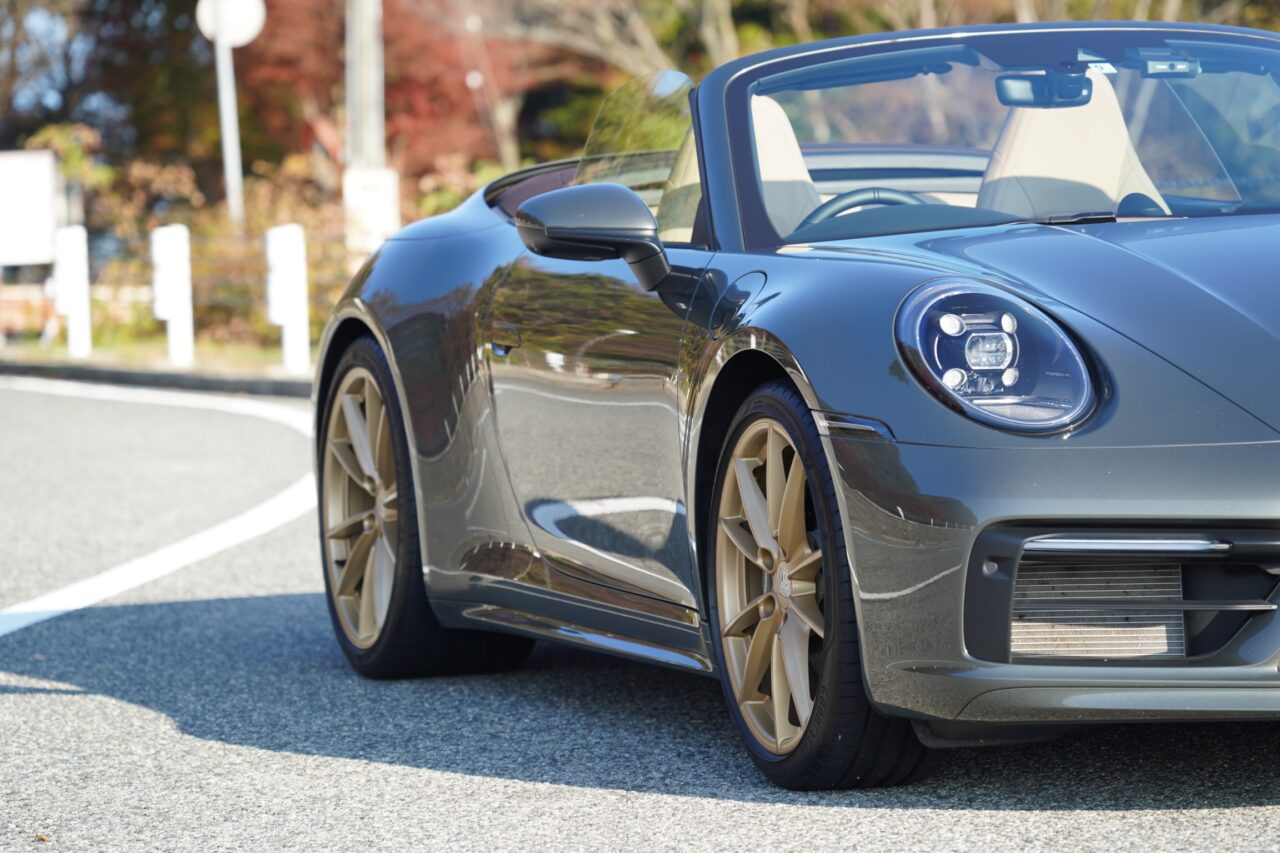
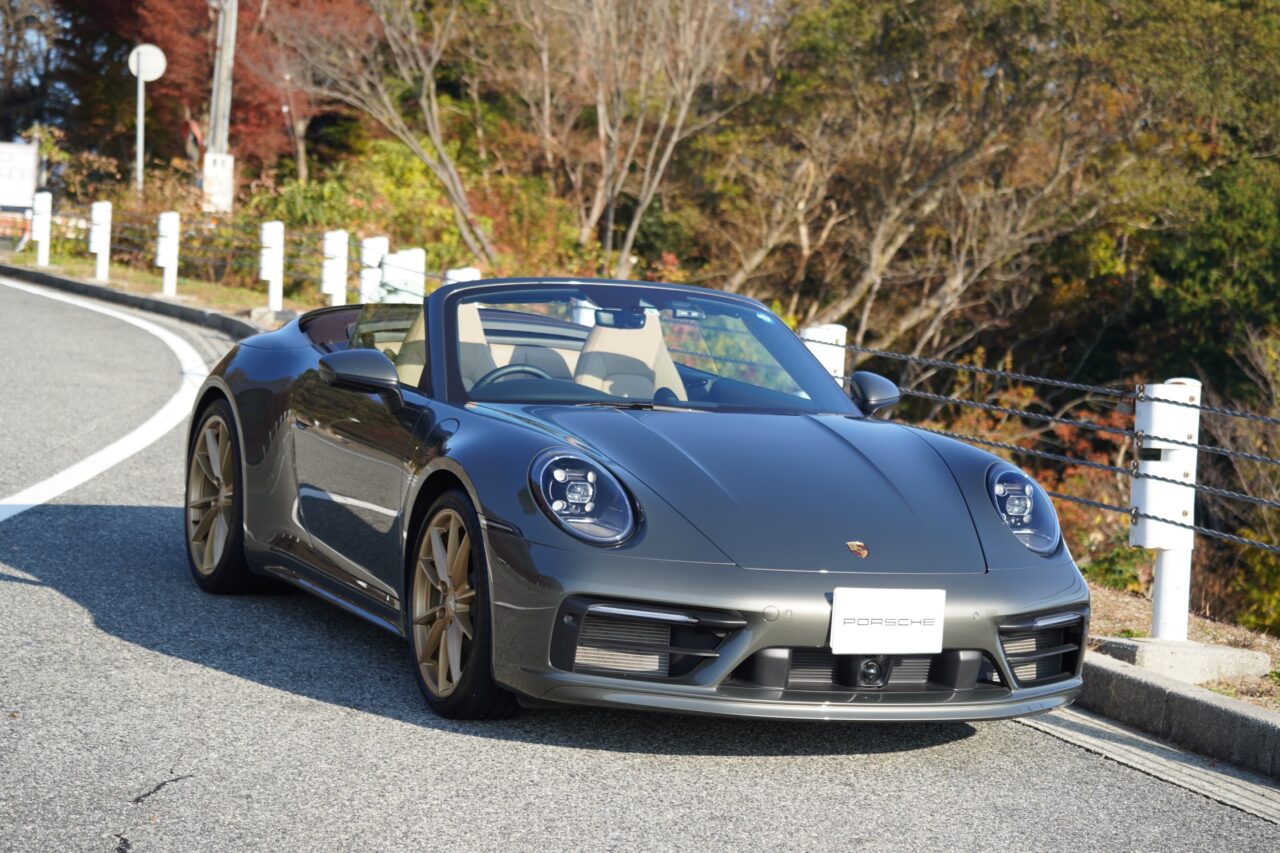
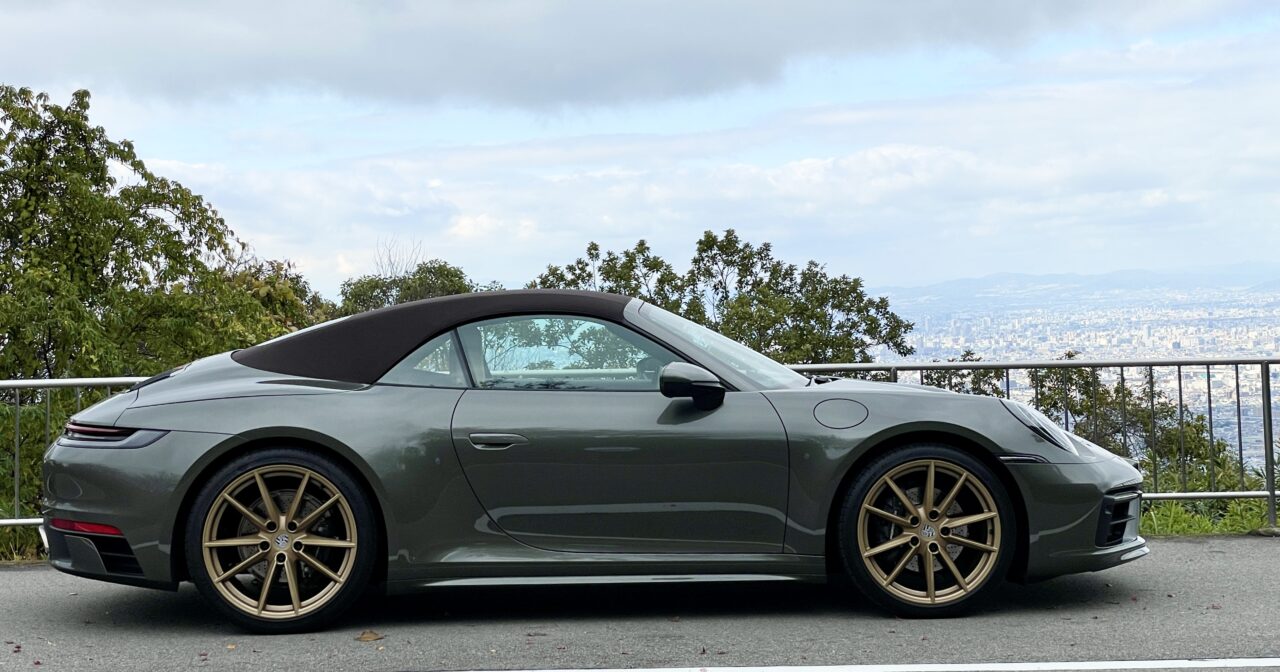
Since Aventurine Green is originally a mineral color, the gold of the Satin Aurum wheels, also mineral-based, matches very well. Plus, my car’s interior is Mojave Beige, so the yellowish tones inside harmonize naturally with the wheel color.
When I look at my car parked, it feels like it has a certain ‘flair’—almost like a demo car or a test vehicle.
Ride Comfort
As for ride comfort, the bottom line is that at low speeds around town, the 20/21-inch wheels clearly feel more comfortable. More specifically, there seems to be about 10% less vibration on uneven surfaces, giving a smoother, more refined feel.
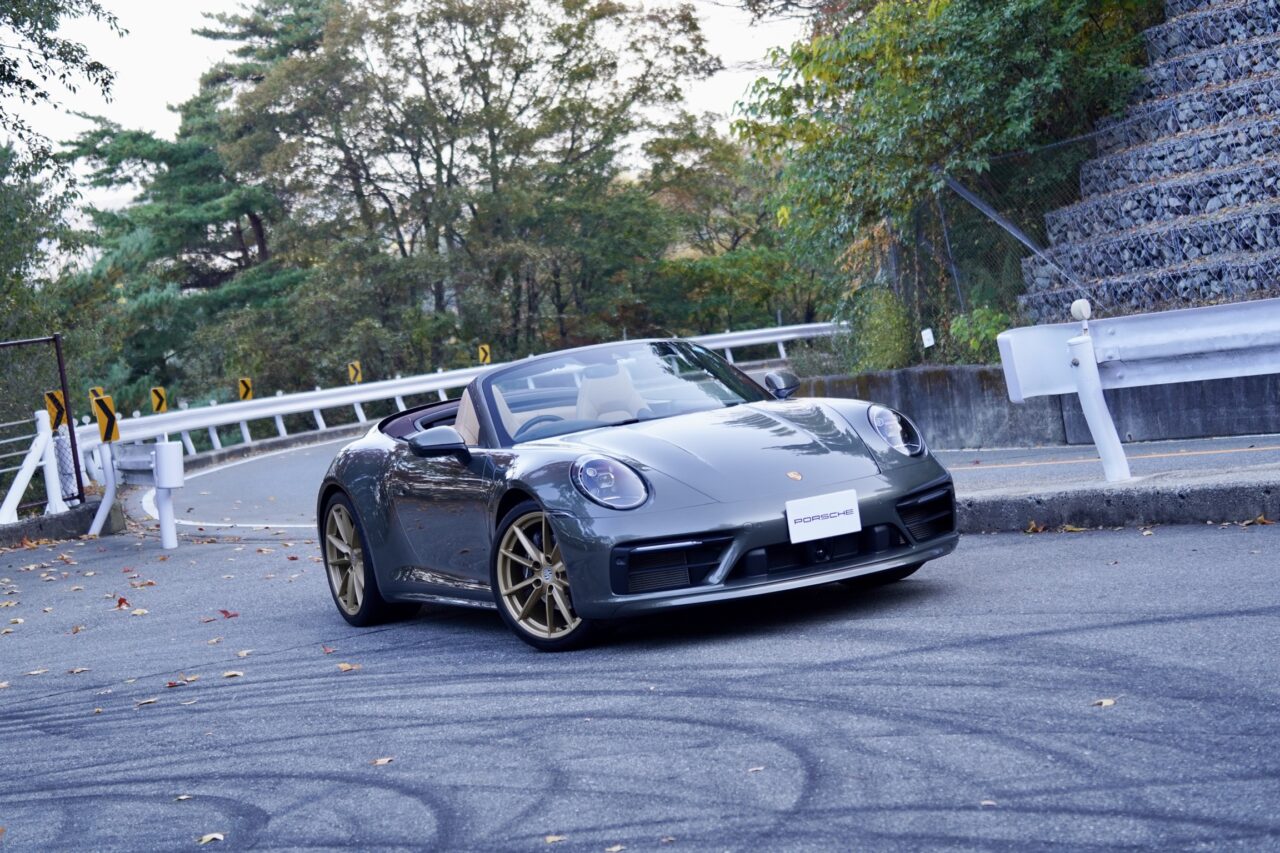
This matches my experience with cars equipped with or without PCCB brakes: lighter unsprung weight can sometimes feel bouncier at low speeds, while heavier unsprung weight often results in a more composed ride. Right after swapping the wheels, the suspension felt more settled from the moment I started driving around town.
As a side note, when I mentioned this on Twitter, a former automotive vehicle dynamics engineer shared valuable insight that wheel rigidity is also important for ride comfort, so I’ll share that here for reference.
同じサイズで質量と剛性を振ったホイールを作って評価したことがあります。質量よりも剛性が体感しやすいです。軽くても剛性低いとダメで、重くても剛性高いと乗り心地も操安も良いです。なので軽量なアフターマーケットのホイールは信用してません。
— きむてつ!車好き (@kimutetsu718) November 11, 2022
Testing the car on mountain roads, the 19/20-inch wheels still feel a bit more nimble, especially in throttle response and agility. However, the difference is subtle enough that I no longer notice it unless directly comparing.
Handling and cornering characteristics remain basically the same. Here, tire brand differences seem to have a bigger impact than wheel size.
On the highway, I currently feel the 19/20-inch wheels offer a more comfortable ride. The 19/20-inch setup feels flatter and smoother at higher speeds, almost as if the road surface imperfections disappear, whereas the 20/21-inch wheels don’t provide quite the same sensation.
However, I believe this is largely influenced by the tire brands.
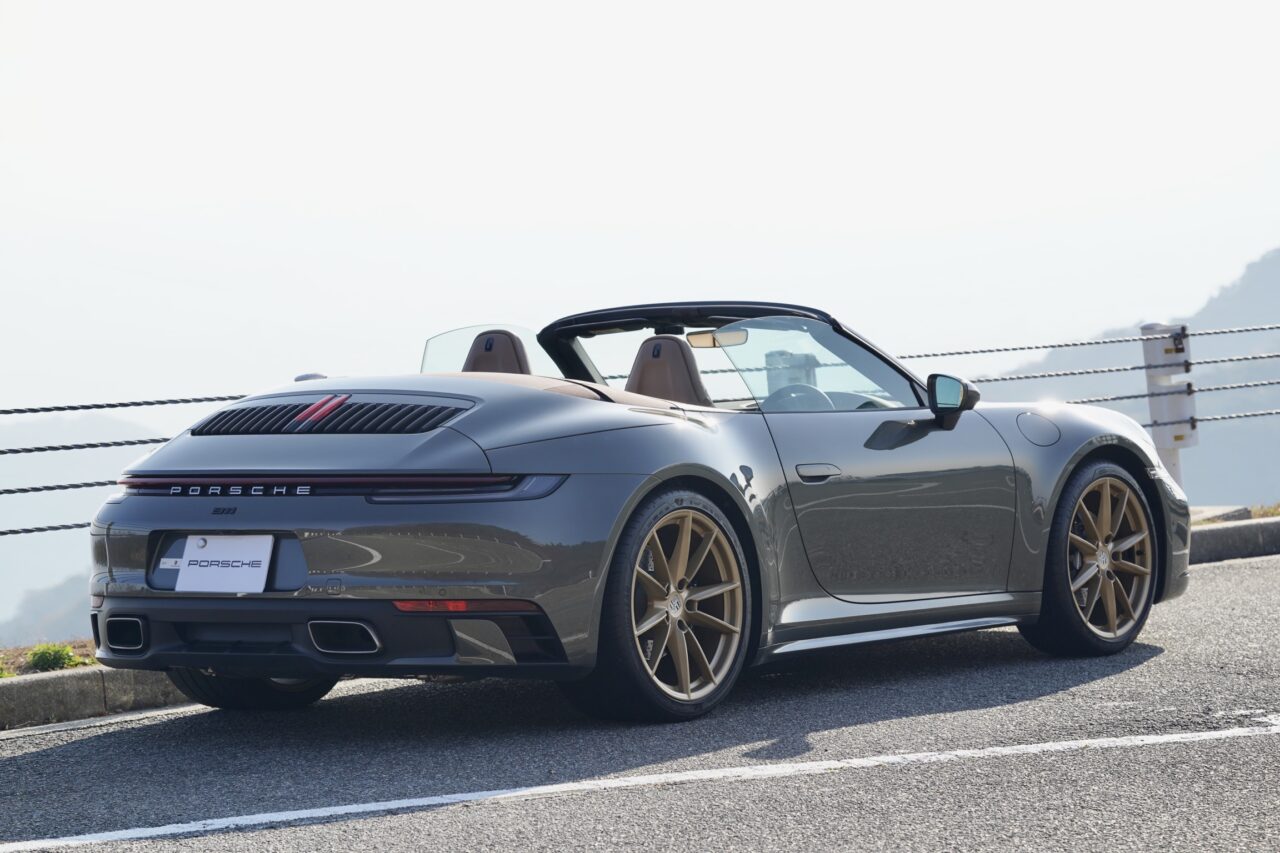
The 19/20-inch wheels were fitted with Pirelli PZERO (Porsche-certified NA0), while the new 20/21-inch wheels have Goodyear EAGLE F1 ASYMMETRIC 3 (also Porsche-certified NA0).
I’ve had Goodyear EAGLE F1 tires on my 981 Boxster GTS new from the factory, and my impression wasn’t great. While grip on wet roads was outstanding—possibly even better than Michelin—the tires produced subtle, irregular vibrations at high speeds. I even had the dealer check for wheel balance issues right after delivery.
Eventually, switching to Michelin Pilot Sport 4S dramatically improved ride comfort and made highway driving feel smooth and effortless—something I also wrote about in my touring blog for reference.
This time, I’m getting a very similar impression: compared to Michelin Pilot Sport 4S or Pirelli PZERO, the Goodyear tires feel noticeably different. A friend who has experienced all three brands on a 992 agrees, so I’m confident in this assessment.
I plan to switch to Michelin tires at some point.
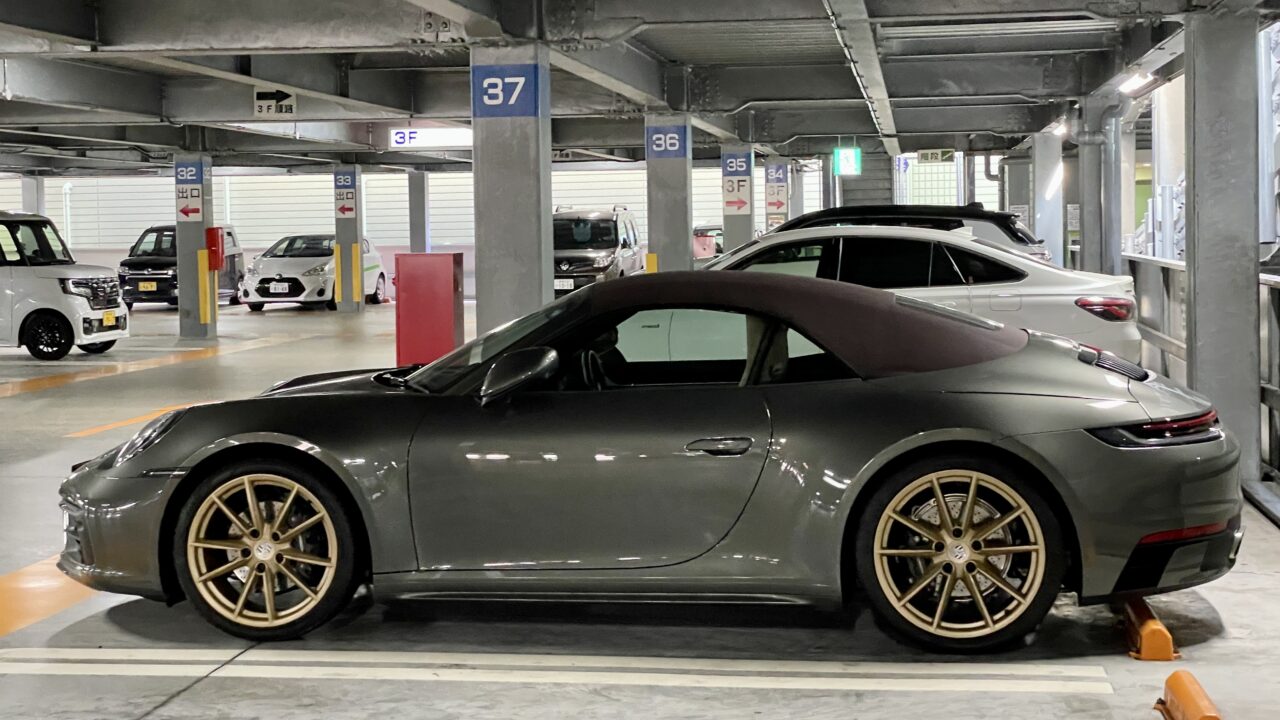
Changing wheels really transforms the car’s impression.
If you’re a watch enthusiast, you’ll understand—it’s like how changing a watch strap instantly changes the whole look. Porsche options often can’t be added later, but wheels are easy to swap, so it’s a great way to refresh your car’s image from time to time.
このブログが気に入ったらフォローしてね!


Comment ( 0 )
Trackbacks are closed.
No comments yet.